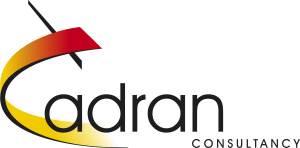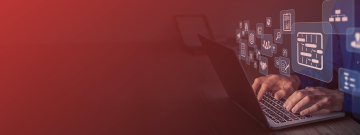
How to trade Forex using the right software
Any commodity trader knows, predictability is good for business. Unfortunately, volatile currency exchange rates do not contribute towards this utopia. In fact, they result in the exact opposite. That is why companies have Treasury departments: to mitigate the unpredictability of currency exchange rates. Working with the right commodity trading software is essential for your business. In this article you will learn why.
What is Forex Trading?
Forex (also FX) stands for foreign exchange. It is the process of changing one currency to an other. This change happens on the Forex Market. This is not a central marketplace, so there is no centralized exchange. Currency is traded electronically between the buyer and the seller: the traders. This happens against rate pairs, for example Euro and US dollars. Because there is no need for a centralized exchange, trading forex happens 24 hours a day. Whatever is demanded, a supply is always available by someone in the world. Forex markets are not limited to spot (over-the-counter trading against a spot price). There are also derivatives markets for forwards, futures, options, and currency swaps. Each of these are utilized so companies can buy some predictability.
Why do we need Forex Trading?
Forex trading is needed for numerous reasons. Imagine you live in Brussels (Belgium) and are planning a weekend getaway with your partner to the South of France. Because both Belgium and France have the Euro (EUR) as their domestic currency, you do not have to exchange currency to pay for a romantic dinner in Saint-Tropez. Now imagine you are taking on the famous Route 66 (USA) with a bunch of friends. In the USA you will need US Dollars (USD) to fuel up that exciting Mustang you rented. In this example Forex comes into play. You can swipe your credit card at the gas station and your card issuer will exchange Euros to Dollars for you at spot (current exchange rate plus a handling fee). Or maybe you wanted some certainty beforehand and exchanged Euros to Dollars in Belgium around the time you booked your trip, and you pay cash for the fuel. Fortunately, the EUR/USD exchange rate at the time was much more in your favor. Despite the commission paid to the exchange kiosk. In this case you hedged your USD need for your vacation.
In commodity trading, contracts are mostly signed some time prior to the physical delivery date. When commodities are purchased from another country, there is a fair chance that the contract will not be settled in the purchaser’s domestic currency. For example, a company based in The Netherlands is purchasing soybean from Brazil. The purchased quantity will be delivered at the port of Rotterdam in 2 batches with 6 months between deliveries. Payment is wired upon delivery at port in USD. The Dutch company will need to pay 100.000 USD for each half of the purchased quantity. Knowing these facts, a Treasurer guarding the company’s cashflow in USD can exchange Euros to Dollars if there is an expected deficit in the company’s USD position upon each expected payment date. This can either be done on the day of settling the invoice of 100.000 USD (at a spot rate) or in advance with a futures contract. Regardless of the timing, Forex is required. By hedging an expected deficit, the risk of an unfavorable exchange rate is mitigated.
The benefit of using the right software
In the soybean example mentioned the Treasurer needs to decide if, when and how to act on the company’s USD needs. Let’s start with the ‘if’. With Arantys it is possible to create a Forex contract off the back of a purchase contract with the necessary information prepopulated into the Forex contract. Another possibility to identify deficits is using a dashboard showing the current and future position in a certain currency. Arantys can register all purchase and sales contracts and have the current cash balances from the ERP available to model into an integrated dashboard. This allows a Treasurer to easily identify a potential deficit in advance. Any money received or contract signed is shown real-time in this dashboard.
Once a deficit is identified, a decision can be made on how and when to act on this. Dollars can be bought immediately at the spot rate, a limit order can be placed with the bank or a futures contract can be agreed. The choice is up to the Treasurer. Register all of this in Arantys and instantly gain insight in the cashflow dashboard.
Conclusion
Using the capabilities and seamless integration of Arantys will help you gain predictability and accuracy in your books. It also helps you focus on trading commodities and reducing the Forex risk for your business in the most agile way possible. Because no trader wants to see their hard-earned profit evaporate because the exchange rate made a U-turn just before the settlement date of their contract. Would you like to know more about our software solution for commodity traders?
Author: Fadi Malti
Senior Finance Consultant at Cadran Consultancy



